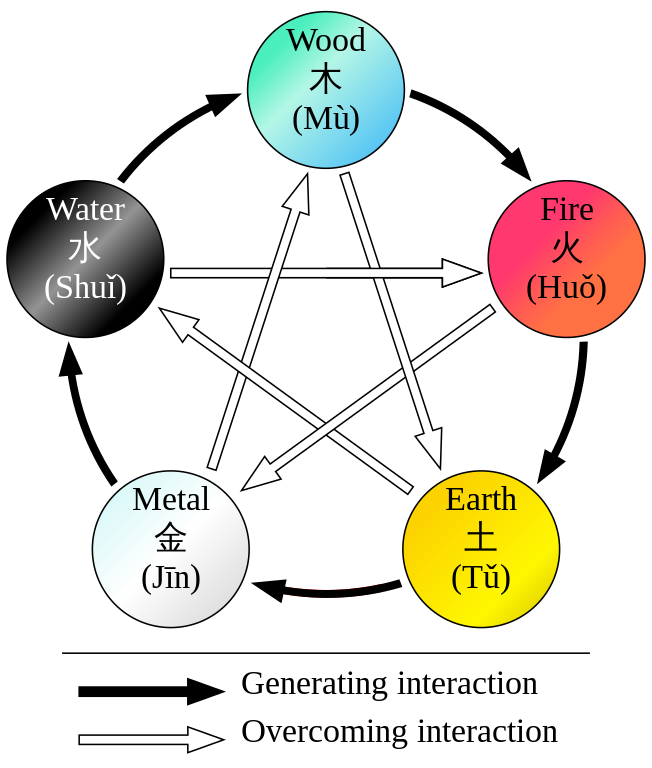 S asks: “Can you tell me if the Quinary is a new age symbol?”
S asks: “Can you tell me if the Quinary is a new age symbol?”My answer to this question is similar to the answer I gave in Friday’s blog about qigong. The Quinary symbol is part of Traditional Chinese Medicine, which is rooted in the non-Christian Taoist belief in two opposing energy forms known as yin-yang. It has become popular in the New Age movement, but it is not a New Age contrivance.
For those who do not know, the Quinary is a symbol for the Five Element system. According to Taoist belief, Yin-qi and Yang-qi are said to be feminine and masculine energies that produce the five elements – wood, fire, earth, metal, and water – which in turn give birth to everything in existence (a rather obvious non-Christian belief system).
Because everything that exists belongs to one of these categories, the five elements are said to support and control each other in a complex system of relationships. For instance, the five elements correspond to parts of the human body/emotions – wood (liver, gall bladder, eyesight, anger) Fire (Heart, small intestine, blood vessels, tongue/speech, joy) Earth (Spleen, stomach, muscles, mouth/taste, thinking) Metal (Lung, Nose, large intestine, skin, nose/smell, melancholy) Water (Kidney, Ear, bladder, bones, ears/hearing).
If one element is out of balance, it fails to properly support the others, and this causes disease.
However, these five elements are not static and are constantly interacting with each other and determining our physical and mental state of being at any given time. When one element gpes out of proportion, practitioners believe we can experience “mental disharmonies” such as anger or fear, as well as physical complaints in the different organ systems.
Also associated with the Five Elements of the body are the Five Shen which are the spirits associated with each of the body’s five yin organ-systems (Heart, Kidney, Spleen, Liver and Lungs). Each of these spirits is said to have a connection with an element and its organ as well as with the energy of a planet and a direction (east, west, north, south). Practitioners “wake up” the Shen of the organs similar to what shamans do when “calling in the spirits” during their rituals.
Some Chinese acupuncturists use the five-element system to diagnose their patients and Chinese herbal medicine practitioners rely on the Five-Element “tastes” (sour, salty, bitter, pungent & sweet) to determine how different herbs will act within the body. It's also used in the practice of qigong and tai chi.
Having explained all this, it will be easier to imagine the Quinary symbol as being a circle with five evenly spaced spheres around its circumference, with each sphere labeled with an element and corresponding body part/spirit, and clockwise flow lines showing the transition from one element to the next. This clockwise motion is called the Yang cycle. By joining every second element through internal lines that form a five-pointed star in the center of the circle, the yin or Control cycle is revealed.
If this sounds complicated – it is! And it gets far more involved than this blog requires.
But I think you get the picture – while the Quinary is not necessarily New Age, it is one of many eastern modalities being promoted by New Agers who like to blend aspects of many religions in order to “water them all down” and eventually pave the way for the creation of one world religion.
